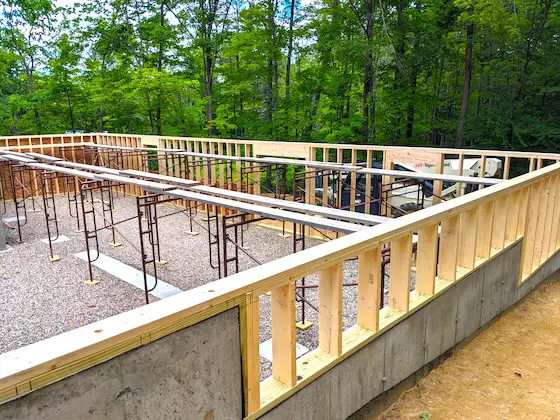DIY Home Building

This is a small house being built just miles from where I live. Many things can go wrong in a hurry if you don’t know what you’re doing. Copyright 2024 Tim Carter
DIY Home Building - Be Prepared for Delays and Heartache
As I look back on the decades of giving advice to homeowners like you, one thing stands out in my mind. I’ve always tried my best to tell you the truth about how hard or easy some tasks might be. That’s the opposite tact of most of the home improvement entertainment shows I see on TV. Most share half-truths. I’m sure you’re aware that a half-truth is a whole lie.
Over the past year, I’ve been hired as a consultant to guide several people in the construction of new homes. Using technology, I can do this quite effectively, as video calls put me at a job site thousands of miles away. Should you be thinking of tackling a new home build by yourself, I thought you might benefit from a few short stories about these other homeowners I’ve worked with.
I Can Be Your Virtual General Contractor
Fifteen months ago, a woman hired me to be her virtual general contractor. (GC) She told me she was going to be the on-site GC but figured she needed someone with actual experience to provide backup assistance. Six months ago, I discovered there was a second GC on the job that she hadn’t told me about. As you might imagine, things got awkward in a flash.
The woman made critical mistakes early in the process, long before she hired me. She and her husband had bought an existing home and decided to tear it down and build a new house on the existing foundation. They hired an architect. Using the homeowners’ dreams and ideas, this architect toiled on a plan that had several major flaws. The biggest one was the roof design.
The roof was to be a huge slanted surface that mimicked the house’s steep driveway. The massive beams, thick sheathing that doubled as a finished interior ceiling, and the thick closed-cell foam required to insulate the roof cost collectively over $100,000.00. That price doesn’t include the huge crane required to position the beams or any later to build the roof.
A crack in the existing foundation was not spotted until days before the framing was to begin. The floor trusses ordered for the job were placed too close to one another. The list of mistakes that caused major issues grew by the day. A first-floor bathroom had to be redesigned on the fly because the layout put a toilet directly on top of one of the floor trusses.
All of this could have been avoided if the woman had hired me before she even thought of talking to an architect. Fortunately, the woman’s husband was a very successful businessman. It was made clear to me that they had an unlimited budget to fix mistakes as they popped up. My guess is that you don’t have an unlimited budget.
Idaho Homeowner Surprised by Out-of-Square Foundation
Next up is a man building a house in the great state of Idaho. He’s on a tight budget and decided to do all of the plumbing on the job. He discovered I’ve been a master plumber since 1981 and felt I could help long distance. I drew his riser diagram so he could get a permit. We then started to do regular video calls so I could tell him exactly how to install the pipes under his concrete slab.
This homeowner was using a general contractor, but we discovered the foundation was poured out of square by two inches just last week. While you may think this is no big deal, it can lead to serious issues. In this man’s case, quite a few of the pipes poking up through the concrete slab are no longer in the center of the exterior and interior walls where they should be.
How could this have been prevented? If you decide to roll up your sleeves and get involved in a home-building project, you need to be very careful about placing trust in people you’ve never worked with before. This man and his wife could have determined that the foundation was out of square when the footing was poured. It would have taken them about thirty minutes to establish the square corners of the foundation on top of the hard concrete footing.
This man could have calculated the diagonal measurements that ensure the foundation is square using a simple calculator or a free one online. He could have purchased a 100-foot tape measure and marked the precise corners of the foundation on the footings in minutes.
Then, once the foundation forms were set, he could have checked them again before the concrete was poured. Had he hired me months before he did, I would have given him a checklist of things to do at these early stages of construction.
One of the things on the checklist is making sure the top of the foundation is correct. Most builders place foundations too deep into the ground. When this happens, it’s very hard for the grade to slope away from the house in all directions.
The building code is quite clear, and the ground must slope away from the foundation a minimum of 6 inches in the first ten horizontal feet away from the house. What’s more, you should have a minimum of six inches of foundation exposed all the way around the house.
Is it starting to make sense? Think of all the things you don’t know what to do or look for before you get into a very deep financial mess.
Column 1565